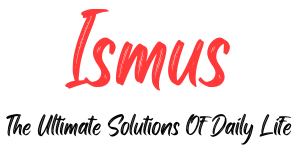Introduction
Writing a proposal can be daunting, whether you’re bidding for a project, seeking funding, or pitching a business idea. It’s not just about putting words on paper; it’s about persuading your audience that your idea is worth their time and resources. Let’s dive into some essential tips and pitfalls to avoid when crafting your next proposal.
Understanding the Proposal
Before delving into tips and mistakes, it’s crucial to understand what a proposal entails. Essentially, a proposal is a document designed to convince someone to take action or approve a plan. Whether you’re proposing a new business venture proposal tips and mistakes, a research project, or a partnership, your proposal should clearly outline your intentions and why they matter.
Preparation Phase
Successful proposals start with thorough preparation. Beginresearching your audience or client to understand their needs and expectations. Define clear objectives for your proposal: what do you aim to achieve, and how will your proposal fulfill those objectives?
Structuring Your Proposal
A well-structured proposal is easier to navigate and more persuasive. Here’s how you can effectively structure your proposal:
Title and Cover Page
Your proposal’s title should be catchy yet informative. Include a cover page with necessary details like your name or organization, recipient’s name, date, and proposal title.
Executive Summary
Provide a concise overview of your proposal, highlighting the main points and benefits.
Problem Statement
Clearly define the issue or challenge your proposal addresses. This sets the stage for why your proposal is needed.
Writing Tips
When writing your proposal, clarity and brevity are key. Use straightforward language and avoid jargon or unnecessary complexity. Tailor your writing style to resonate with your audience, keeping their needs and preferences in mind.
Design and Formatting
The visual presentation of your proposal matters. Use professional fonts, colors, and layouts that enhance readability and visual appeal. Incorporate charts, graphs, or diagrams where necessary to illustrate key points.
Lack of Clarity and Specificity
Ambiguity can undermine your proposal’s credibility. Be specific about your objectives, solutions, and expected outcomes.
Ignoring the Client’s Needs
Tailor your proposal to address the client’s specific requirements and concerns. Show that you understand their challenges and how your proposal resolves them.
Poor Structure and Organization
A poorly organized proposal can confuse and frustrate your reader. Ensure a logical flow of ideas and use headings and subheadings to guide your reader through the document.
Overlooking Proofreading and Editing
Typos, grammar mistakes, or formatting errors can detract from your proposal’s professionalism. Always proofread and edit your proposal before submission.
Man made diamonds, also known as synthetic or lab-grown diamonds, are created through technological processes that mimic the natural conditions under which diamonds form deep within the Earth’s mantle.
Follow-Up and Feedback
After submitting your proposal, follow up with the recipient to answer any questions and seek feedback. This demonstrates your commitment and responsiveness.
Conclusion
In conclusion, crafting a compelling proposal requires careful planning, clear communication, and attention to detail. By understanding the needs of your audience, structuring your ideas effectively, and avoiding common pitfalls, you can significantly enhance your proposal’s impact and likelihood of success. Remember, a well-crafted proposal not only communicates your ideas but also showcases your professionalism and capability.
